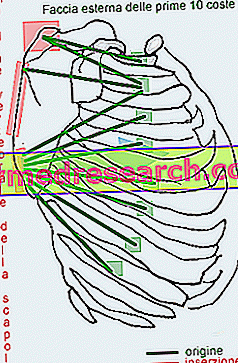By Dr. Antonio Parolisi
Considerations on the state of body hydration and on the estimation of the daily caloric requirement through the use of plicometry.
A very versatile field evaluation used by the vast majority of sports technicians or health professionals is plicometry.
On the one hand the very low costs of this method and on the other the speed of application by calculation for equations on the estimate of body fat, have decreed success and spread.
Through the use of the plicometer, a layer of tissue is "clamped" which, in substance, is composed of skin, fat and partly of subcutaneous fluids, the latter being present only in small part because with the pressure of the fingers tend to flow out of the below the "stapled" compartment.
A very versatile equation, for both men and women aged between 15 and 60, is the estimate of body fat using the Nomogram of Jackson et al., Where for the male subjects the folds of the zone are used as reference. right for: pectoral, abdominal, and thigh. In the female subjects, on the right side of the body, the following areas are used: tricipital, soprailiaca, and thigh .
The sum of the three folds is inserted into the graph and is made to coincide with the age of the examiner, so that the line between these two points will intersect the percentage of body fat respectively for men and women.
We try to understand how in a practical way.
We have the case to analyze a 35-year-old male subject with a body weight of 100kg, with the pectoral fold of 15mm, the abdominal 20mm and the thigh 20mm; therefore with a sum of folds equal to 55mm.
Making this value coincide with the age line will have a result of 17% of body fat: we see the graph to understand in practice how we got this value:

In theory at this point one could calculate the Lean Mass, simply by subtracting the weight of the body fat percentage from the total weight, thus obtaining the quantity expressed in kg of everything that is not fat .
This would be true if the subject was in a state of ideal body hydration, therefore around 60% of total water, a condition known as " normoratazione ". In fact, water is the primary constituent of the entire human structure. It is estimated that lean muscle contains about 73% of total water. Let's say we're "submerged".
The basic problem is that not all individuals have a good body hydration, in fact it will be possible to have situations of reduction of the quantity of liquids in the body, a phenomenon known as "dehydration", extremely dangerous and in extreme cases lethal; or you can have the opposite situation, where the quantity of liquids is in excess, a phenomenon known as " hyperhydration " or as everyone will know "water retention".
Understanding under which condition the body is found in reference to the three cases exposed (normoratazione, dehydration or iperhydration), is possible only through the use of Bioimpedenziometrica instrumentation, where an estimate of the state of hydration of a subject is obtained.
Understanding how much water you have in your body is essential for estimating an individual's body composition.
CONTINUE: Part Two »



